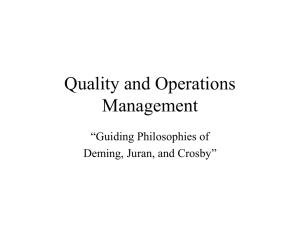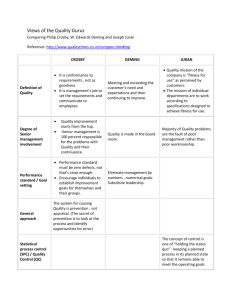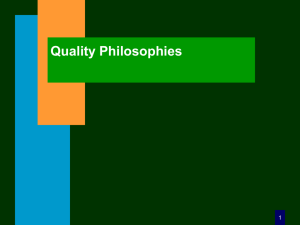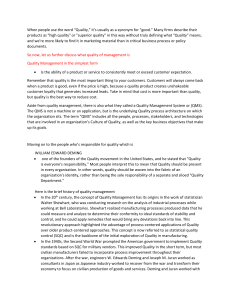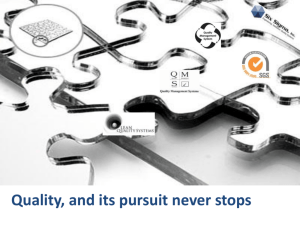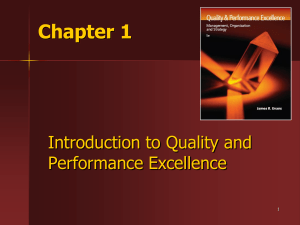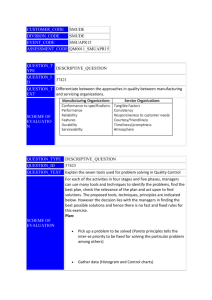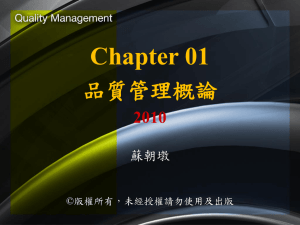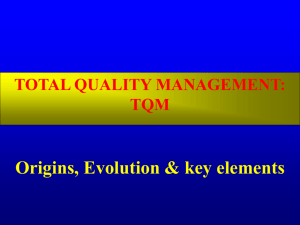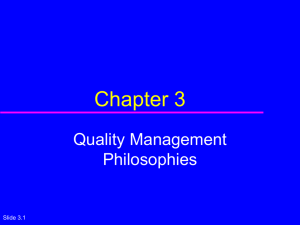free sample here
advertisement
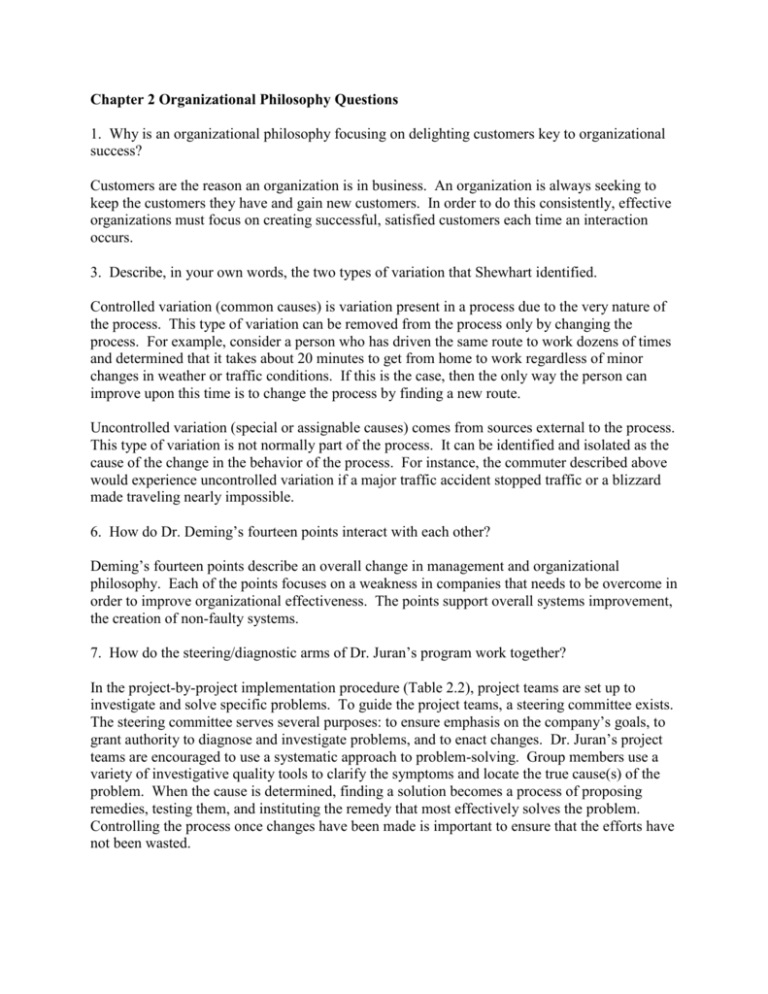
Chapter 2 Organizational Philosophy Questions 1. Why is an organizational philosophy focusing on delighting customers key to organizational success? Customers are the reason an organization is in business. An organization is always seeking to keep the customers they have and gain new customers. In order to do this consistently, effective organizations must focus on creating successful, satisfied customers each time an interaction occurs. 3. Describe, in your own words, the two types of variation that Shewhart identified. Controlled variation (common causes) is variation present in a process due to the very nature of the process. This type of variation can be removed from the process only by changing the process. For example, consider a person who has driven the same route to work dozens of times and determined that it takes about 20 minutes to get from home to work regardless of minor changes in weather or traffic conditions. If this is the case, then the only way the person can improve upon this time is to change the process by finding a new route. Uncontrolled variation (special or assignable causes) comes from sources external to the process. This type of variation is not normally part of the process. It can be identified and isolated as the cause of the change in the behavior of the process. For instance, the commuter described above would experience uncontrolled variation if a major traffic accident stopped traffic or a blizzard made traveling nearly impossible. 6. How do Dr. Deming’s fourteen points interact with each other? Deming’s fourteen points describe an overall change in management and organizational philosophy. Each of the points focuses on a weakness in companies that needs to be overcome in order to improve organizational effectiveness. The points support overall systems improvement, the creation of non-faulty systems. 7. How do the steering/diagnostic arms of Dr. Juran’s program work together? In the project-by-project implementation procedure (Table 2.2), project teams are set up to investigate and solve specific problems. To guide the project teams, a steering committee exists. The steering committee serves several purposes: to ensure emphasis on the company’s goals, to grant authority to diagnose and investigate problems, and to enact changes. Dr. Juran’s project teams are encouraged to use a systematic approach to problem-solving. Group members use a variety of investigative quality tools to clarify the symptoms and locate the true cause(s) of the problem. When the cause is determined, finding a solution becomes a process of proposing remedies, testing them, and instituting the remedy that most effectively solves the problem. Controlling the process once changes have been made is important to ensure that the efforts have not been wasted. 8. In your own words, describe the difference between big Q and little q. Use examples from your own experiences to back up your description. Juran’s definition of quality goes beyond the immediate product or moment of service. To Dr. Juran, quality is a concept that needs to be found in all aspects of a business. To more clearly communicate this concept, Dr. Juran contrasts big Q and little q to show the broad applicability of quality concepts. Note that big Q extends to all aspects of any organization, regardless of type. 9. People tend to make five erroneous assumptions about quality. What are two of these assumptions and how would you argue against them? 1. Quality means goodness, or luxury, or shininess or weight, which makes quality a relative term. 2. Quality is intangible and therefore not measurable. If judged in terms of “goodness,” then quality is intangible; however, quality is measurable by the costs of doing things wrong. 3. There exists “an economics of quality.” 4. Workers are to blame for being the cause of quality problems. Without the proper tools, equipment, raw materials, and training, workers cannot produce quality products or services. Management must ensure that the necessary items are available to allow workers to perform their jobs well. 5. Quality originates in the quality department. According to Crosby, the quality department’s responsibilities revolve around educating and assisting other departments in monitoring and improving quality. 11. How are the teachings of each of the people in this chapter similar? Where do they agree? Deming, Juran, and Crosby encourage organizations to: -determine who their customers are -determine the key critical success factors for meeting their customers’ needs, requirements, and expectations -establish effective processes that enable them to provide products and services that meet their customers’ needs, requirements, and expectations -focus on process measurement and improvement -provide the management involvement and commitment required for organizational success. 12. How are the teachings of each of the people in this chapter different? Where do they disagree? Deming, Juran, and Crosby discusses different ways of reaching the goals. Deming and Juran focus primarily on leadership efforts and management commitment and involvement. Juran has his journey from symptom to cause and Deming has his 14 points. Crosby focuses on pursuing zero defects through process improvement. Shewhart concentrated on quality improvement through reduction in variation. Their definitions of quality are different, too. Feigenbaum’s definition is more complete (see text). Deming focuses on non-faulty systems. Crosby focuses on conformance to requirements. Crosby’s is the narrowest quality definition. 13. Briefly summarize the concept Dr. Taguchi is trying to get across with his loss function. He uses his concept and diagram to point out that any deviation from the target specification results in loss. Organizations should strive to determine and then meet their customers’ target requirements. 14. Describe Dr. Taguchi’s loss function versus the traditional approach to quality. The traditional approach to quality emphasizes conformance to requirements, usually stated as a specification with +/- limits. The Taguchi Loss Function points out that any deviation from the target specification results in loss.

